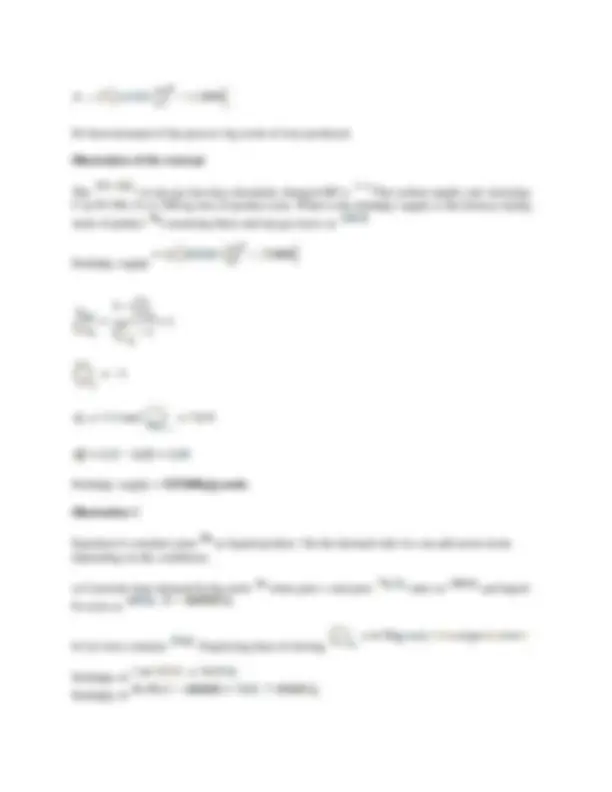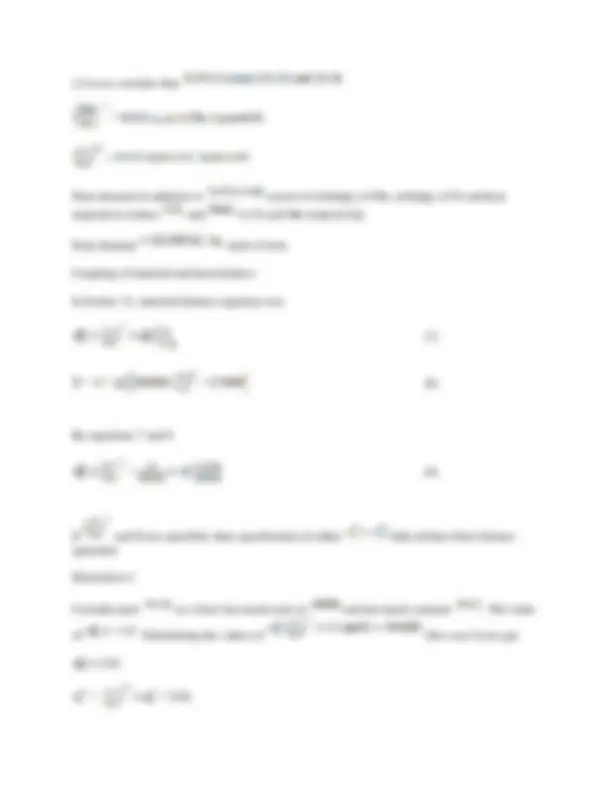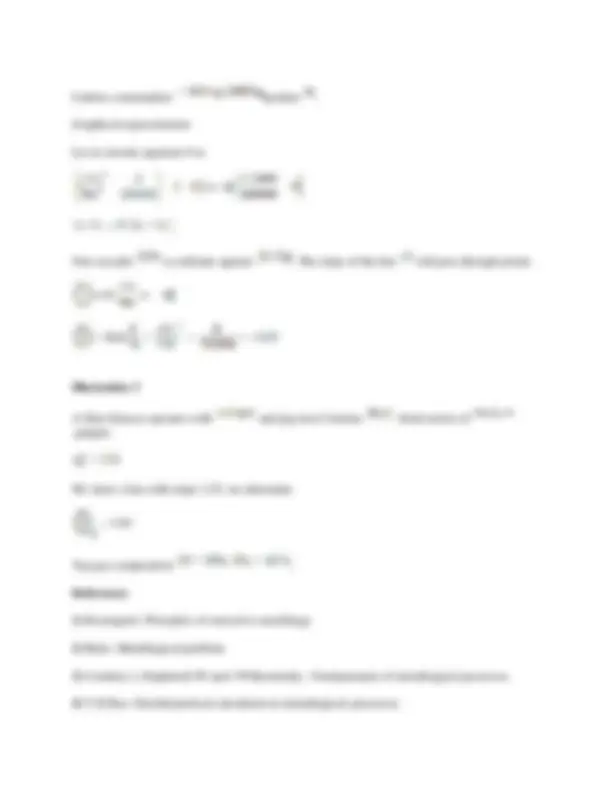





Study with the several resources on Docsity

Earn points by helping other students or get them with a premium plan


Prepare for your exams
Study with the several resources on Docsity

Earn points to download
Earn points by helping other students or get them with a premium plan
Community
Ask the community for help and clear up your study doubts
Discover the best universities in your country according to Docsity users
Free resources
Download our free guides on studying techniques, anxiety management strategies, and thesis advice from Docsity tutors
Some concept of Materials and Heat Balance in Metallurgical Processes are Blast Furnace Stoichiometry, Blast Furnace, Coke Making, Chalcopyrite Ore, Complex Sulphide Ores.Main points of this lecture are: Enthalpy Balance, Blast Furnace, Slag Formation, Heat Demand, Heat Supply, Simplified Approach, Hematite Changed, Neglecting Heat, Iron, Enthalpy
Typology: Study notes
1 / 6

This page cannot be seen from the preview
Don't miss anything!




blast furnace stoichiomelry–II
Preamble
In lecture 31 a simplified material balance is considered for ironmaking blast furnace and the results of material balance formulation are presented in the form RIST diagram.. In that it is considered that charge consists of pure iron oxide and coke and the product is hot metal containing carbon only. We have not considered heat balance for that simple case.
This lecture considers heat balance in terms of heat input and output. Heat input is required to meet the thermal demand of the process of ironmaking. Heat demand of the blast furnace is met principally by the combustion of coke. In the calculations of coke rate, it is therefore necessary to consider the heat requirements. In the following we will be considering a simplified case in which pure oxide is a source of iron supply and coke is the source of carbon to illustrate the concept. This means that slag formation in this simplified case does not occur.
Enthalpy balance in blast furnace
Consider a case where input is pure ( in reality iron ore is charged)and carbon (actually
coke is used) at. Air is supplied at (in reality air is preheated). Hot metal is
considered to be a molten mixture of iron and carbon and exits at. At the moment we
exclude slag formation. Top gas leaves at (this is an ideal case to explain the concept).
Enthalpy balance
Enthalpy into furnace per mole of product =Enthalpy out of furnace per mole of product.
,Where
Or
Heat demand Heat supply
Negative sign in equation 2 indicates that heat is produced. In the equation 2 heat is required to
raise the temperature of hot metal from 298K to 1800K. Heat of formation of , CO and CO 2 is given below:
Substituting the values in equation 2 we get
It is shown in lecture 31 that
By equation 3 4 5 and noting
The eq. 6 is in terms of kj /kg mole of product iron.
Eq. 6 is a simplified approach. It considers heat demand for hot metal only. In reality one has to consider heat demand for slag formation, decomposition of limestone, heat of mixing etc.The heat demand terms can be added simply on the left hand side of the equation 6
Left hand side of eq. 6 is heat demand (D) which is a variable; variable because it may vary from furnace to furnace type of charge etc. Thus equation 6 is
c) Let us consider that
Heat demand in addition to consist of enthalpy of Mn, enthalpy of Si and heat
required to reduce and to Si and Mn respectively.
Heat demand mole of iron.
Coupling of material and heat balance
In lecture 31, material balance equation was
By equations 7 and 8
If and D are specified, then specification of either fully defines blast furnace operation
Illustration 2
Consider pure as a feed, hot metal exits at and hot metal contains. The value
of Substituting the values of (See case b).we get.
Carbon consumption product.
Graphical representation
Let us rewrite equation 9 as
One can plot as ordinate against. The slope of the line will pass through points
Illustration 3
A blast furnace operates with and pig iron Contains. feedconsists of
We draw a line with slope 2.55, we determine
Top gas composition.
gangue.
References
1) Rosenquist: Principles of extractive metallurgy
2) Butts: Metallurgical problem
3) Coudrier; l, HupkinsD.W and I-Wilkomirnky : Fundamentals of metallurgical processes.
4) Y.K Rao: Strichiometrical calculation in mettalurgical; processes.